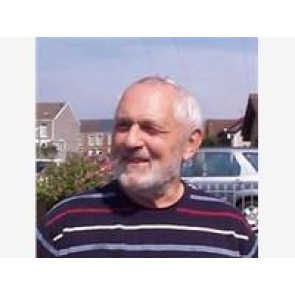BRIAN SYDNEY HURSEYB.Hursey-Telegraph ObituaryHURSEY On May 26, Brian Sydney Hursey, BSc, of 26 Pale Rd, Skewen, Neath. Brian Hursey was an international expert on the control of tsetse flies, the vector of sleeping sickness in man and animals, in Africa and cleared some of the largest areas ever achieved.In tribute to Brian Hursey, who died on 26th May, RA, PH, JS, GV write:Brian Hursey was born in London on 12 Sept 1939 and as a small child moved with his parents to a farm in Wales. He attended Whitland Grammar School as a teenager and played rugby for Narbeth. Brian started university in London to train as dentist but left after one year to work as a technician at Swansea University. He then decided to study zoology so worked his way through university and was awarded a BSc Honours in Zoology in 1964 from the University of Wales – Swansea. As a student he had specialised in the study of tsetse flies and this allowed him to apply for a job with the Kenyan Government. He moved to Kenya with his wife Pat in 1964 to take up the position of Tsetse Officer in the Lake Victoria District. He lived in Kisumu and Ukwala for six years where he planned and supervised ground spraying in the area between Kisumu and Busia on the Uganda Border. By 1966 the area had been successfully cleared of tsetse flies and for the next 16 years it remained tsetse free.When the contract in Kenya ended Brian and Pat had the choice of jobs in Zimbabwe and Canada. They chose Zimbabwe and Brian joined the Department of Veterinary Services, Tsetse and Trypanosomiasis Control Branch (TTCB). Initially he was again mostly involved with DDT ground spraying and played his part in pushing the fly distribution in SE Zimbabwe well beyond the Mozambique border. He later worked with his teams in Zimbabwe’s Western Region throughout the war of independence and helped prevent that conflict impacting even more on the productivity and welfare of people in the sensitive and dangerous area bordering Lake Kariba and Zambia.Brian was one of the last of the highly successful ground spraying operators who managed military scale operations over a period of 40 years and who between them had cleared almost half a million km2 in countries such as Nigeria, Kenya, Uganda and Zimbabwe.Recognising that there was little future for widespread use of DDT, the Tsetse & Trypanosomiasis Control Branch (TTCB) sought alternatives to ground spraying and in the mid 1970s carried out investigatory trials with low-dosage aerial spraying. Brian took charge of Zimbabwe’s first large scale control operation involving both aerial spraying and ground spraying (the latter to protect the borders of the former) based at Chiwonde in 1982. Although still strongly favouring ground spraying, this operation confirmed his conversion to aerial spraying. Watching one small Aztec spray plane crossing the Sengwa Valley and disappearing into the far distance, leaving behind an almost imperceptible trail of insecticide he expressed great concern that TTCB were perhaps wasting their money. Within days there was not a tsetse to be found in the treatment area and yet butterflies, bees, midges etc. were still abundant along the banks of the Sengwa River. This combined operational approach continued for several years and successfully rolled back the tsetse distribution in the Western Region. In 1987 odour-baited targets were also included for a truly integrated control operation which cleared tsetse from 20,000km2 and for the first time ever eliminated them from the Umfurudzi Game Reserve. During this period Brian rose through the ranks of Zimbabwe’s Tsetse & Trypanosomiasis Control Branch to become head of tsetse control and subsequently Head of Division (Assistant Director Veterinary Services). Under Brian the Branch diversified its control activities, continued its refinement of aerial spraying and bait techniques, and obtained EU funding for Zimbabwe’s part of the largest ever tsetse and trypanosomiasis control programme in Southern Africa.In 1988 Brian was recruited by FAO and became senior animal health officer in the Animal Production and Health Division, with special responsibility for tsetse and trypanosomiasis control. Brian’s transfer from Harare to Rome signalled the end of large scale chemical control using ground and aerial spraying in Zimbabwe – and shortly after these techniques were downgraded in the regional EU funded programme.Brian considered himself a hands-on control officer and was never entirely comfortable with the politics and diplomacy of his UN posting. Although he was at times encouraged to broaden his horizons for political reasons he never really saw the need to look beyond tsetse control as the first line of attack to curb the ravages of trypanosomiasis. Nevertheless, he rose to the challenge, became a respected and capable ambassador for FAO and developed a good working relationship with colleagues throughout Africa who appreciated his expansive knowledge and experience of operational tsetse control. At the 50th Anniversary Conference of the International and Scientific Council for Trypanosomiasis Research and Control in Mombasa in 1999 Brian was awarded a 'certificate of appreciation' on behalf of the people of Africa - a gesture which he valued greatly. In the late 90s Brian established the FAO/IAEA/IBAR/WHO Programme Against African Trypanosomiasis, (PAAT) a unique inter-agency alliance still functioning today.Brian was a determined and dedicated Welshman who always brought those qualities to his work. He was involved with some of the largest and most successful tsetse control campaigns in Africa and showed that with appropriate technologies, strong determination and adequate resources, Africa’s greatest risk to its livestock, namely trypanosomiasis, could be removed from vast areas of productive land. He retired from FAO in 2000 and returned with Pat to his family in Wales. Unfortunately his health deteriorated and in his last few years he had a difficult fight with cancer. He passed away peacefully on 26 May with his daughter Kathi and wife Pat at his side, as she had been for 44 years. He never tired of talking about tsetse control and he always had an opinion. If he had any regrets about his career it was that he should have done more or that somehow he might have helped to secure those huge areas where tsetse were removed. It is earnestly hoped that his legacy will be carried forward as new initiatives develop in Africa to address this huge veterinary and medical problem.
Keep me informed of updates






